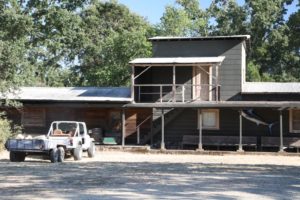

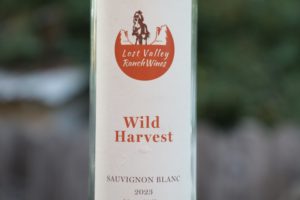 Lost Valley Ranch Wines is named in homage to former resident of the ranch, western novelist Vingetta (Vingie) Elizabeth Roe (1879-1958) who named her property Lost Valley Ranch referring to visitors coming from the city of Napa who would often get lost in trying to find her property. Roe was born in Kansas and moved to this property in 1924, living with her mother Clara; an article describing her career in The News and Napa’s Illustrated Weekly dated Wednesday April 30, 1947 describes her first home as a, “beautiful red-roofed house that stands out against the far foothills as one descends on the high grade on the Monticello Road”. Roe wrote 31 books including her first, Maid of the Whispering Hills, published in 1912. And nine of her books were made into films including Splendid Road, starring Lionel Barrymore, Primal Lure, starring William S. Hart, Maid of Whispering Hills and Tharon of Lost Valley.
Lost Valley Ranch Wines is named in homage to former resident of the ranch, western novelist Vingetta (Vingie) Elizabeth Roe (1879-1958) who named her property Lost Valley Ranch referring to visitors coming from the city of Napa who would often get lost in trying to find her property. Roe was born in Kansas and moved to this property in 1924, living with her mother Clara; an article describing her career in The News and Napa’s Illustrated Weekly dated Wednesday April 30, 1947 describes her first home as a, “beautiful red-roofed house that stands out against the far foothills as one descends on the high grade on the Monticello Road”. Roe wrote 31 books including her first, Maid of the Whispering Hills, published in 1912. And nine of her books were made into films including Splendid Road, starring Lionel Barrymore, Primal Lure, starring William S. Hart, Maid of Whispering Hills and Tharon of Lost Valley.
Roe had a 6th grade education; her love of writing began in her youth. She began writing poetry at a young age, which she later sent to the Wichita Eagle, a Kansas newspaper. The newspaper published her works, one of which caught the eye of Oklahoma Agriculture and Mechanical College President, Angelo C. Scott. Roe attended Oklahoma Agricultural and Mechanical College for 6 months, but eventually dropped out. One of her professors said something like, “she flunked out after two months but retained her genius”.
Roe wrote some of her books while living at Lost Valley Ranch. The wooden tower where she did her writing from still exists, although the upper most story eventually succumbed to rot and has since been removed. An old house partially constructed of adobe was already here prior to Roe’s home; this house still stands and is located next to Roe’s former writing tower. And she hosted a number of gatherings of female authors at the ranch.
Roe sold the ranch in Wooden Valley in the 1930s and moved to the hillsides in the Vaca mountain range east the Silverado Trail near Oakville. And she later moved to Cloverdale, with her house located on the banks of the Russian River in neighboring Sonoma County. Both a physical and a digital collection of her works, referred to as the Vingie E. Roe Collection are available at Oklahoma State University. She died in Sonoma County but is buried in the city of Napa, housed in the main mausoleum at Tulocay Cemetery.
Long time Wooden Valley family, the Clark’s purchased the property from Roe and owned it for approximately 70 years. They sold the property to Eric Lamb in 2008; both Eric and his wife Debra Becker live on the ranch and oversee it’s day to day operations. A year after purchasing the property they planted more than 100 olive trees of several Tuscan cultivars including Leccino and Frantoio. The first grapes were planted that same year to Sauvignon Blanc and Cabernet Sauvignon and later Chardonnay and Petit Verdot for a total of 24 acres separated into 12 distinctive blocks. The elevation ranges from 500 to 800 feet. The vines were planted by Pina Vineyard Management Company; they continue to oversee their management, led by vineyard manager, Johnny White. A tiny block of head-pruned and dry-farmed Chardonnay was planted by Deb and Eric; they manage this particular block themselves. The vines are farmed organically with no use of herbicides or pesticides; owl and bluebird boxes are located throughout parts of the property. And Lost Valley Ranch is a Certified California Sustainable Vineyard.
And in addition to growing grapes and olives, animals are brought to the ranch and graze seasonally. These include sheep brought in by Cori Carlson of Napa Pasture Protein; they keep the grass down, helping reduce fuel for potential wildfires. The sheep were also introduced to their vineyard to ‘mow’ cover crops, but sheep do not graze linearly and as a result were trying to cross over irrigation lines and through trellising among the rows of vines. Additional plantings will take this into account and will incorporate higher trellising so the sheep can wander freely. Cattle also are used to graze the property. And after every harvest, compost from San Francisco’s curbside food scrap collection program is spread among the vines.
Their wine brand is named in homage to Roe, while Cordero Vineyards is named in honor of Eric’s last name Lamb – which translates to Spanish as cordero.
Their own power supply is located on site with solar and a series of batteries powering nearly everything on the ranch. PG&E is a backup system. Lost Valley Ranch produces under 200 gallons of wine commercially in a small winery housed in a ‘cut and cover’ cave located towards the rear of the property against the hillside, while the rest of their production is housed at a winery in St. Helena. In 2023 they became a member of the Save the Family Farms, an organization that has been pushing to change legislature around allowing small “micro wineries” to legally host tastings at their vineyards despite not having a physical winery.
For reference, the only other physical winery in Wooden Valley is nearby Altamura Vineyards; while not located directly on Wooden Valley, Mount St. George Winery is located in the hills slightly above the valley. When Deb and Eric began making wines, they were truly garagists; Deb recalls using buckets with holes drilled in them while manually pressing out the grapes. They are still garagistes, but their equipment has gotten more sophisticated and efficient, using a crusher/destemmer and a small bladder press.
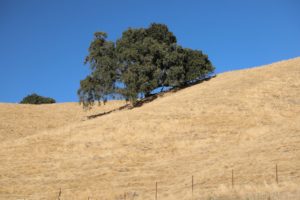
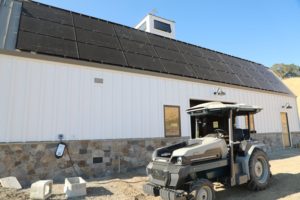
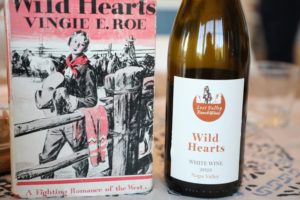 Until early 2024, Deb and Eric were making the wines themselves. Attending a fundraising event for Ukrainians living in Napa Valley in January of 2024, they met winemaker Ivan Burdinskyi. Ivan graduated from Crimean Agrotech University and worked at wineries in Crimea. He left Ukraine in early 2022, traveling overland to Georgia. From there he went to Italy to try and find a winery/vineyard related job. But as he told us, “no language, no work”. So he decided to narrow his search to English speaking countries. He posted a job wanted description on Facebook; it was answered by Whitehall Lane Winery in Napa Valley who invited him to work harvest in 2022. With the assistance of the organization, Napa Valley to Ukraine Burdinskyi was able secure a visa to come to the U.S. He is now the consulting winemaker for Lost Valley Ranch.
Until early 2024, Deb and Eric were making the wines themselves. Attending a fundraising event for Ukrainians living in Napa Valley in January of 2024, they met winemaker Ivan Burdinskyi. Ivan graduated from Crimean Agrotech University and worked at wineries in Crimea. He left Ukraine in early 2022, traveling overland to Georgia. From there he went to Italy to try and find a winery/vineyard related job. But as he told us, “no language, no work”. So he decided to narrow his search to English speaking countries. He posted a job wanted description on Facebook; it was answered by Whitehall Lane Winery in Napa Valley who invited him to work harvest in 2022. With the assistance of the organization, Napa Valley to Ukraine Burdinskyi was able secure a visa to come to the U.S. He is now the consulting winemaker for Lost Valley Ranch.
While Napa Valley is perhaps singularly associated with one valley, in reality there are several other valleys, all named after early settlers. These include, Berryessa Valley (now underneath Lake Berryessa), Chiles Valley, Gordon Valley, Pope Valley and Wooden Valley. Wooden Valley is named after John Wooden (1801-1887), a towering man of 6’8″ originally from Virginia who settled here in 1852. He migrated west in 1846 on a wagon train that originated in Missouri before eventually reaching Oregon. Wooden Valley was originally part of the 35,000 acre land grant called Chimiles Rancho. When Wooden died his obituary in The Napa Register dated Friday November 25, 1887 mentioned his coffin fitter, Mr. Logan who said, “of the thousands of coffins he has fitted up, this was the longest”. Wooden is buried in a small cemetery in Wooden Valley on what is now Rancho Chimiles.
Part of the original stage coach road used to run through Lost Valley Ranch, over the mountains to the city of Napa and out to Sacramento. And mule trains would travel north to the town of Monticello, an agricultural community that was displaced in the 1950s to make way for Lake Berryessa. In Wooden Valley, the Stagecoach stop was located near the intersection of Highway 121 and Wooden Valley Road.
Wooden Valley Elementary School had an extremely long run; its one-room classroom opened in 1853 and permanently closed in 2010.
Wooden Valley has long been home to a variety of agricultural pursuits including wine grapes. The St. Helena Star dated Friday September 11, 1885 mentions Zinfandel grapes growing in Wooden Valley had already been received that year by Uncle Sam Winery in the city of Napa. An article in The Napa Register dated Friday May 1, 1885 describes farmers growing corn, wheat, barley and a variety of orchards and caring for their, “flocks and herds”. The same article states that, “the only drawback to fruit raising in this valley, is the great distance it has to be hauled to market”. Today the primary agricultural crop in Wooden Valley are wine grapes. Other vineyards include Rancho Chimiles, Altamura and Old School. One of Napa Valley’s iconic producers, Caymus Winery has long purchased grapes from growers here.
Other recorded happenings in Wooden Valley over the decades include an albino gopher discovered in 1885 by rancher W.M. Lyons at his ranch. A year later the roof of the house owned by this same Lyons was torn off and blown a distance of 3/4 a mile during what was described as a, “first class hurricane” by the Napa County Reporter dated Friday January 29, 1886.
Select Wines
As a tribute to Roe, each of their wines is named after a title of one of her books. 2023 is the inaugural vintage of Lost Valley Ranch wines. The focus of their winemaking is on minimal intervention and input, striving to showcase both the characteristics of their grapes and of their property. And dovetailing the properties rich history into their story.


 The 2023 Lost Valley Ranch Sauvignon Blanc, Wild Harvest is 100% varietal. This wine is medium yellow in color; the bouquet is highly aromatic, even teasing us with its scents from the other side of the room before we had a chance to taste it. It offers aromas of spring florals including honeysuckle and star jasmine along with pineapple, pineapple guava, lychee, passion fruit, pear, white nectarines and a kiss of lime. Bright and balanced as Sauvignon Blanc should be, on the palate there are flavors of Babcock peach, bosc pear, red delicious apple, crenshaw melon, passion fruit mousse, mandarin orange, limeade and a lingering note of pineapple guava. This latter flavor is one we are intimately familiar with having harvested these fruits every year since 1992 from bushes growing at our local cemetery. The palate offers some herbal notes but is in no way green or grassy. Refreshing, balanced and with a zippy but not bracing acidity, the finish immediately begs another sip. And the accompaniment of either raw oysters in tangy mignonette sauce or lightly seared scallops still containing a bit of ‘sea grit’ for additional character. This wine was aged sur-lie for 7 months in a combination of both new French oak barrels (40%) with the balance being used.
The 2023 Lost Valley Ranch Sauvignon Blanc, Wild Harvest is 100% varietal. This wine is medium yellow in color; the bouquet is highly aromatic, even teasing us with its scents from the other side of the room before we had a chance to taste it. It offers aromas of spring florals including honeysuckle and star jasmine along with pineapple, pineapple guava, lychee, passion fruit, pear, white nectarines and a kiss of lime. Bright and balanced as Sauvignon Blanc should be, on the palate there are flavors of Babcock peach, bosc pear, red delicious apple, crenshaw melon, passion fruit mousse, mandarin orange, limeade and a lingering note of pineapple guava. This latter flavor is one we are intimately familiar with having harvested these fruits every year since 1992 from bushes growing at our local cemetery. The palate offers some herbal notes but is in no way green or grassy. Refreshing, balanced and with a zippy but not bracing acidity, the finish immediately begs another sip. And the accompaniment of either raw oysters in tangy mignonette sauce or lightly seared scallops still containing a bit of ‘sea grit’ for additional character. This wine was aged sur-lie for 7 months in a combination of both new French oak barrels (40%) with the balance being used.
The 2023 Lost Valley Ranch Wines White Wine, Wild Hearts is a very unique blend of 60% Chardonnay and 40% Sauvignon Blanc. This wine is medium to deep gold in color; highly expressive upon opening, the bouquet offers stone fruited aromatics including of apricot, nectarine and white peaches with notes of Golden delicious apples, baked pear, honeysuckle, lychee and pineapple. And there is a vein of vanilla as the wine fully evolves in the glass. On the palate there are flavors of pineapple, Golden delicious apple, mandarin orange, pomelo, honeysuckle, pineapple guava, pear, white nectarines and white peaches. The mouth feel offers a creamy and fleshy texture with a flavorful and persistent finish supported by an accompanying bright acidity. Playful, fun and a crowd favorite, we would pair this delightful sipper with a pool, good friends and a warm summer evening. Only 10 cases were bottled. The wine was made on property and aged sur-lie for 7 months in a single new French oak barrel.
The 2023 Lost Valley Ranch Cabernet Sauvignon, Tharon of Lost Valley (barrel sample) is deep ruby in color; the bouquet offers more fruit than barrel influence at this age. On the bouquet there are scents of raspberry, cherry, red plum and red licorice. Lively, energetic and youthful, the palate is higher toned and delivers a variety of red fruits including cherry, red plum, cranberry and currant. The lively acidity runs across the palate with a juicy and mouth watering finish. Lingers with a light toasted oak influence, but is in no way woodsy. And there are hints of darker baking spices. The tannins are lightly grainy and well-integrated into the finish, even at this young age. The finish persists with a very light dusty character. Food wine; we don’t often associate contemporary Napa Valley Cabernet Sauvignon with pairing with Italian food, but this would do well with a tomato sauce and beef based ravioli. For reference, we tasted this from barrel about 11 months post vintage. It will be in the barrel for at least one more year. Malolactic fermentation was already completed at the time of our tasting. This wine is on the low end of the spectrum in terms of S02 additions, but still on the safe side.
—
Total annual production is under 200 cases. The wines are primarily sold direct to consumer through their website. A wine club, titled the Riders Club offers members shipments twice a year. For more information, to purchase wine or to join the wine club, visit: www.lostvalleyranchwines.com








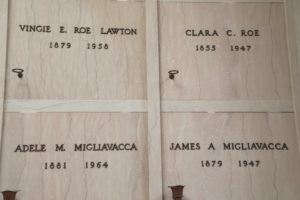




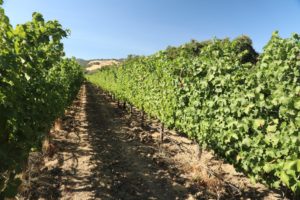
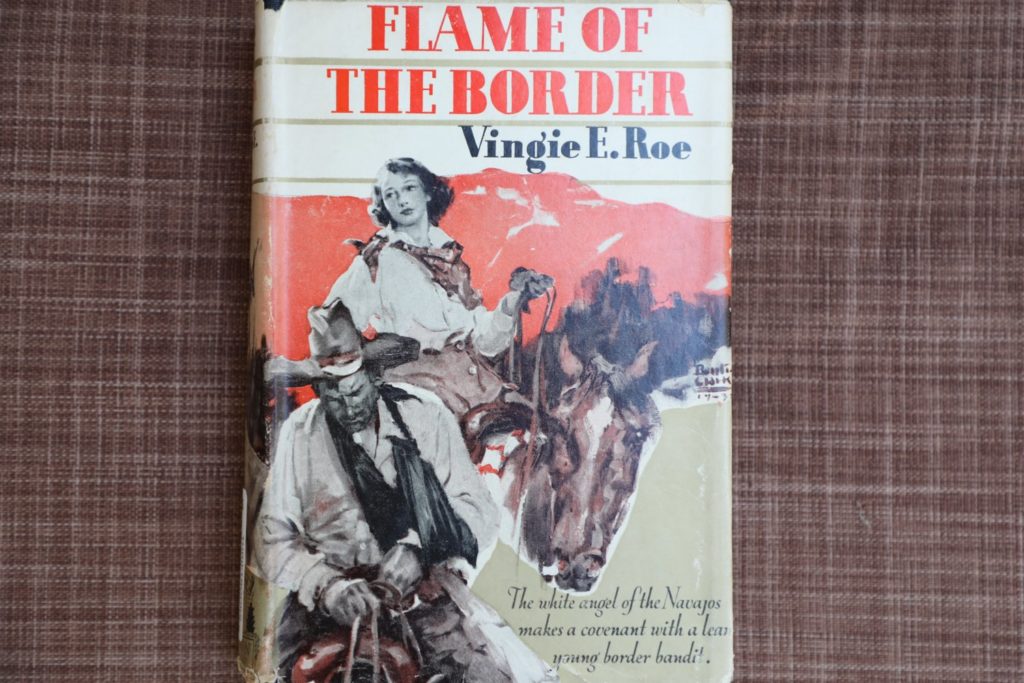
Leave a Reply